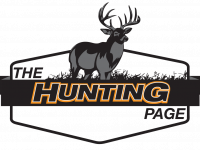Deer drives are an institution in some deer camps, with specific posts and travel corridors handed down from generation to generation like a quality firearm. For others, a deer drive is a back-up plan to hunt during midday, when deer are likely to bed up and hide in thick cover. To a novice, a deer drive may seem simple or even unfair to the deer, since standing hunters will have game pushed right to them. But that’s not quite the case. If you’re going to take part in or organize a deer drive, keep these five tips in mind.
1. Size matters. The longer the drive in distance, the less effective it will be. Pushing a mile of timber may get deer on their feet, but rarely will they travel in a straight or predictable path. Shorter, more well-organized drives will be much more successful.
2. Check the wind. Deer, particularly older bucks, will not be pushed with the wind. Although deer may smell standers, they are far more likely to move into the wind than with it.
it.
3. Drivers often score. One would think that only standers on a drive will get the most shots, but that’s often not the case. Mature deer especially will double back and break between drivers at the first opportunity.
4. Planning is paramount. Giving directions where to post is very difficult, especially for someone new to an area. “By the big tree” is very confusing, so allow plenty of time to get into position and be specific about posting spots, even if you have to take the person there. Begin the drive-by at a set time and have drivers move within sight of each other for effectiveness and safety reasons.
5. Finally, consider making short “sneak drives,” where you have standers at key escape routes and drivers hunting through the mountain rather than making loud noises that give away their exact location. This can work with as few as two people if you know the territory well.

